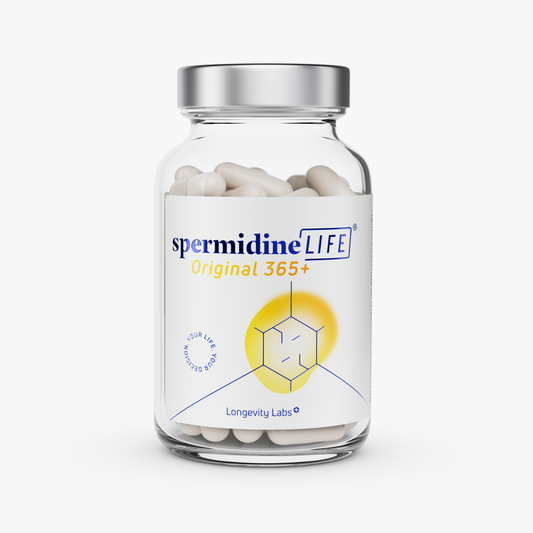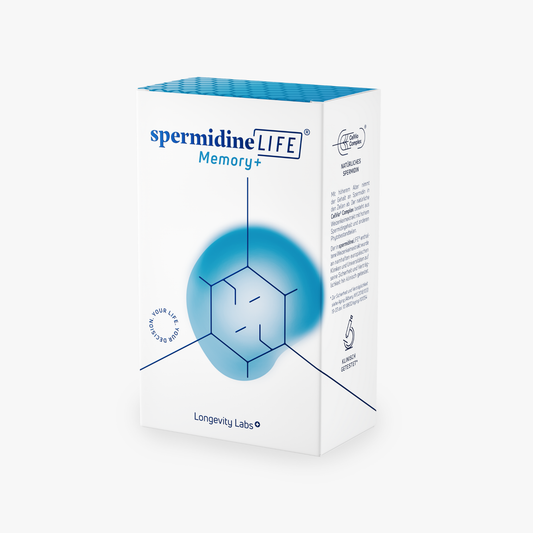
How moments become memories
Science, TLL LongevityLabsDo you remember your first kiss, your favorite stuffed animal from childhood or your favorite teacher from school? We are very sure that you would answer "yes" to at least one of these things. We are also very sure that we might have put a nostalgic smile on the lips of some of you now. It's almost like magic that we can write a word and suddenly memories and images arise in your minds. Have you ever thought about how this is possible? How our brain stores moments and impressions as if it were a memory card?
Our memory is one of the most valuable tools we have. Through the memory function of our brain we can not only communicate, but also maintain social contacts, store emotional moments and form a personality. In short, without memories, none of us would be the people we are. So it's all the more strange that people rarely think about what actually happens in our brains when we memorize things, isn't it? Today we will try to bring you closer to what exactly happens in our synapses when our memory is working.
The neurological side of memory
Our brain is constantly flooded with information every day. Everything that we see, hear, smell or perceive in any other way is processed and passed on by our brain. Of course, not every impression is useful for us. That's why, for example, we don't remember the color of the dog that met us on a walk yesterday. Exactly for this reason one of the main tasks of our brain is also to filter - unnecessary information is not stored, useful information remains (in the best case). And this is where our synapses come into play. Synapses are the connections between a nerve or sensory cell and another nerve cell or muscle, through which stimuli are transmitted. These connections also serve as storage units that allow our brain to store information. This is because our synapses can change and adapt - depending on how they are used!
New research findings
Prof. Dr. Marlene Bartos and Thomas Hainmüller two scientists from Freiburg have investigated in more detail how our synapses can change. In their research, they were able to demonstrate the molecular processes behind our memory. Nerve cell groups acquire a new function and structure when a memory "center" is formed. In this process, the strength of the synapses - i.e. the connections - changes, allowing our brain to retrieve the pathway across the nerve cells more quickly. Metaphorically speaking, of course. The process, of strengthening synapses in the course of memory formation, is also called long-lasting synaptic plasticity. This means that if nerve cells are repeatedly activated together, the connection between them strengthens! And if they are used less, the connections deteriorate again.
In a broader sense, this can also lead to the coupling of information. The more knowledge we acquire on a related topic, the more our brain connects the individual memory locations. So when we then try to recall the knowledge, the whole knowledge network is activated.
For the longest time, it was assumed that mainly the excitatory neurons were involved in this process. However, the two researchers were able to prove that the inhibitory nerve cells also play a role. This is because the targeted shutdown of subsequent nerve cells after synapses ensures that similar memory contents cannot mix. Of course, this does not always work without problems. Have you ever wondered why it is so difficult, for example, to learn two languages at the same time? In the case of similar content that overlaps in too many areas, our brain is sometimes no longer able to separate which information belongs to which category. And suddenly you mix up Spanish words with Portuguese words!
The emotional side of memory
So far so good. But of course many other factors play a role in how well we remember things. We all know that content is better stored if we repeat it more often. Whether it's motor skills or knowledge - the more often we watch a movie, read a book, perform an activity, the better we remember it. But repetition is not the only reason why some things are more likely to move into long-term memory.
The individual meaning we assign to information also plays a role. The more important we find a piece of content, the more complex the signals in our brain that try to ensure that this information is also stored. Conversely, our brain also discards content that is useless or less important to us. This also means that we can consciously influence the intensity of stimuli (if we perceive something as very important). On the other hand, it also means that some impressions can have a very high stimulus intensity, which we do not influence. This means, for example, that information that is associated with strong emotions can also be more likely to be remembered. The first love, a traumatic experience, a film at which one has laughed or cried particularly. So, unfortunately, we can't always choose what stays in our memory.
Our memories are not infallible
Now here's where we get to the really crazy (and sometimes good) point. Our memories can change! In fact, each of our memories can change a little when we recall them, depending on our mood and what we know.
For example, we may remember a moment with a friend as particularly nice and learn after the fact that that person lied to us at that moment. Suddenly the memory is no longer beautiful, but sad. And the most exciting thing about it - our brain can not only change the mood of a memory, but also the content. That's because it aligns our memory to fit with our information. We learned that we were lied to - didn't the person imply something like that in a subordinate clause? Grinned meanly in the process, or sent us an ambiguous message?
Our brain is constantly trying to fill in gaps, add information and adapt to the situation. That's why unintentional misstatements can happen from time to time. For example, imagine you are in court as a witness and you are told that you definitely met someone with glasses the day before. You are sure that you did not. But the more you think about it, the more you doubt how sure you can be. Suddenly your brain starts to place in your memory someone who wears glasses. And so on and so forth.
Although this may sound a little scary, it is also something very beautiful. Because through this ability it is also possible for us to evolve! For example, we can gain new understanding of a person's behavior and thus play back a memory that we may have stored away as mean or offending, with more foresight and from a different perspective.
Summary
Our synapses, the connections between our nerve cells, are responsible for storing, networking, retrieving, and forgetting memories. Unfortunately, there are also diseases such as various forms of dementia which affect our ability to remember and thus have a strong influence on our perception and personality. That is why it is all the more important that we take good care of ourselves with a healthy lifestyle!
But even in everyday life our memory is not infallible. Our memories are constantly changing and are influenced by external impressions. Nevertheless, this also makes personal development and learning possible for us.






